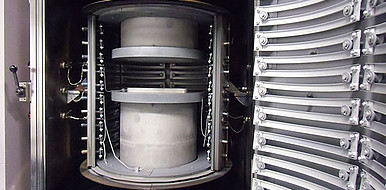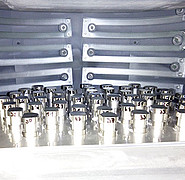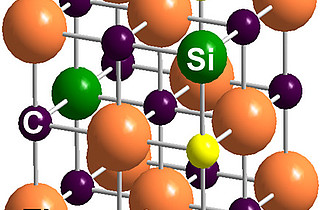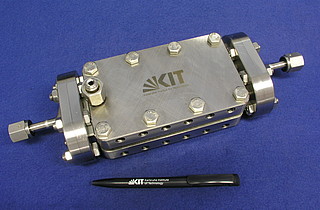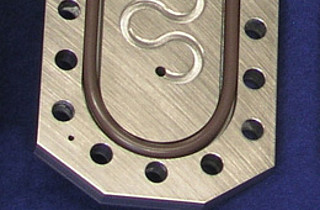Deformation control for diffusion bonding
Diffusion bonding is the only bonding technique that can join internal structures over the entire surface without filler materials such as soldering foil. This produces components that withstand the highest pressure and have good corrosion resistance, such as injection moulding tools. Steels, nickel-based alloys, copper and titanium materials can be joined.
State of the art
In uniaxial diffusion bonding, a component is heated in bonding furnaces under high vacuum and a joining force is applied via a press plunger. At a temperature of approximately 80 percent of the melting temperature of the material, the bonding pressure levels out the surface roughness of the contact surfaces, which leads to component deformation. The greater the roughness and the cross-section of the material being joined, the more deformation will result. Microstructured components with small bonding cross-sections in particular show a deformation risk. The deformation behavior is generally dependent on the component geometry, so that the deformation is difficult to control. Bonding temperature, bonding pressure and holding period are difficult to calculate in advance.
Technology
Scientists at the Institute for Micro Process Engineering (IMVT) at KIT have developed a diffusion bonding process that allows better control of the deformation. The load level is varied in the process: While a lower bonding pressure is applied for the majority of the time and no deformation occurs, the bonding pressure is increased several times for a short time. This results in plastic flow and surface roughness is optimally evened out. During the majority of the bonding time at lower bonding pressure, remaining pores are closed by volume diffusion. Deformation can be limited for each process step. The parameters - temperature, joining force and duration of pressure application - can be adjusted and readjusted towards the next phase.
Advantages
The successive formation of joints due to the load peaks results in vacuum-tight components that have a monolithic connection. The component deformation can be controlled within narrow limits.
Options for companies
The process has been successfully tested on various components. KIT is looking for partners for application-specific further development or licensing.
Your contact person for this offer

Innovation Manager Energy Karlsruhe Institute of Technology (KIT)
Innovation and Relations Management (IRM) Phone: +49 721 608-25335
Email: pelisson-schecker@kit.edu

